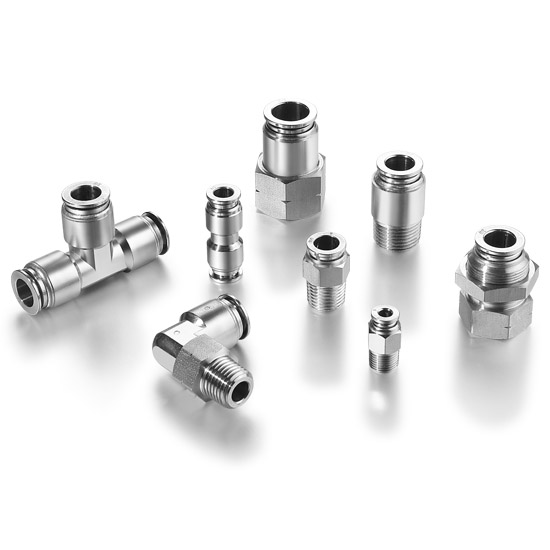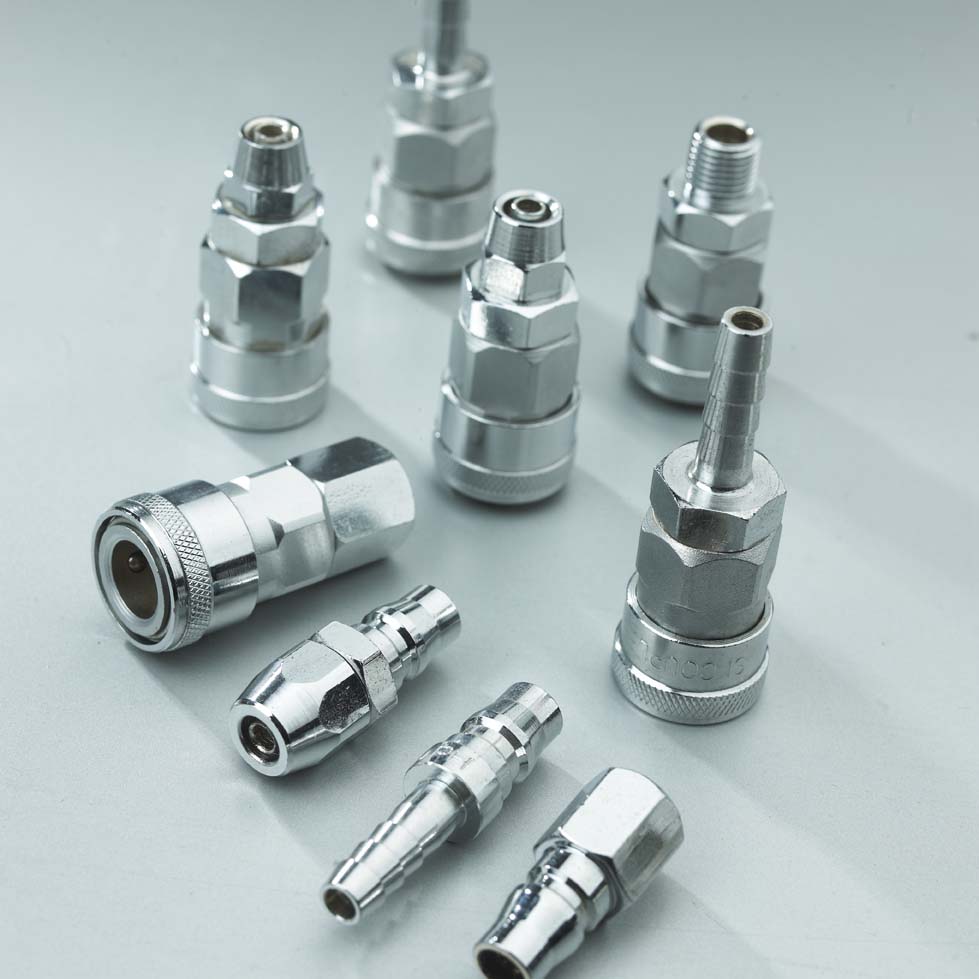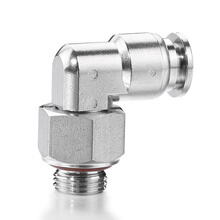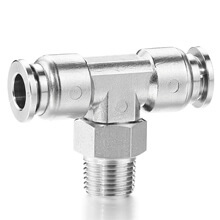Stainless steel pneumatic fittings Guide
Introdcution
Stainless steel pneumatic fittings are components that connect pipes, tubes, valves, and other equipment in a pneumatic system. They are used to change the direction, branch off, reduce, or seal the flow of compressed air or gas. Stainless steel pneumatic fittings are widely used in various industries, such as automation, manufacturing, automotive, medical, and aerospace. They offer several benefits over other materials, such as high corrosion resistance, strength, durability, hygiene, and aesthetics.
How to choose the right stainless steel pneumatic fittings?
What’s the type of stainless steel fittings?
The first step to choosing the right stainless steel pneumatic fittings for your project is to understand the different types of fittings available and their pros and cons. Here are some of the most common types of stainless steel pneumatic fittings and their features:
- Push-in fittings: These are fittings that have a collet and an O-ring that allow them to be pushed into pipes or other fittings without any tools. They are easy to install and remove, but they may not be suitable for high-pressure or high-temperature hydraulic applications. They are suitable for low-pressure and low-temperature pneumatic applications.

- Compression fittings: These are fittings that have a nut and a ferrule that allow them to be tightened onto pipes or other fittings with a wrench. They create a strong and leak-proof connection, but they require more time and effort to install and remove. They are suitable for moderate-pressure and moderate-temperature applications.

- Quick-connect fittings: These are fittings that have a spring-loaded mechanism that allow them to be connected or disconnected with a simple push or pull. They provide a fast and convenient connection, but they may not be very secure or durable. They are suitable for low-pressure and low-temperature applications.

Depending on your project requirements and specifications, you may need to use one or more types of stainless steel pneumatic fittings. You should also consider the size, shape, and grade of the fittings, which will affect their compatibility, performance, and cost.
Some other factors to consider when choose stainless steel pneumatic fittings?
After you have decided on the type of stainless steel pneumatic fittings you need, you should also pay attention to some tips on how to select the appropriate size, shape, and grade of the fittings. Here are some factors to consider:
- Size: The size of the fittings should match the size of the pipes or other fittings they are connecting. You should measure the inner diameter (ID) and outer diameter (OD) of the pipes or other fittings and choose the fittings accordingly. You should also check the wall thickness of the pipes or other fittings and make sure they can withstand the pressure and temperature of the compressed air or gas. Our normal fittings tubings size: 3mm, 4mm, 6mm, 8mm, 10mm 12mm, 14mm, 16mm; 1/8 inch, 5/32, 1/4, 5/16, 3/8, 1/2 etc. For more sizes please contacut us [email protected]
- Shape: The shape of the fittings should suit the direction, branching, reduction, or sealing of the flow of the compressed air or gas. You should choose the fittings that have the right angle, curve, tee, cross, reducer, cap, or plug for your pneumatic system. You should also consider the aesthetic and ergonomic aspects of the fittings and how they will fit in your space and design.



- Grade: The grade of the fittings refers to the chemical composition and mechanical properties of the stainless steel. You should choose the fittings that have the right corrosion resistance, strength, hardness, ductility, and weldability for your application and environment. Some of the most common grades of stainless steel are 304, 316, 316L, 321, and 347. Ideal-bell usually produce the full 316 & 316L stainless steel fittings.
By following these tips, you can ensure that you select the right stainless steel pneumatic fittings for your project and avoid any problems or issues later on.
How to install, maintain, and troubleshoot stainless steel pneumatic fittings to ensure their durability and performance?
Once you have chosen the right stainless steel pneumatic fittings for your project, you should also follow some best practices on how to install, maintain, and troubleshoot them. Here are some suggestions:
Installation: You should use the appropriate tools and techniques to install the fittings according to the manufacturer’s instructions and safety standards. You should also check the alignment, tightness, and leakage of the fittings before and after the installation. You should avoid over-tightening, cross-threading, or damaging the fittings during the installation.
Maintenance: You should regularly inspect and clean the fittings to prevent any corrosion, rust, or dirt buildup. You should also lubricate the threads and seals of the fittings to ensure their smooth operation and prevent any wear and tear. You should replace any damaged or worn-out fittings as soon as possible to avoid any failure or malfunction.
Troubleshooting: You should identify and fix any problems or issues with the fittings as soon as possible to avoid any disruption or damage to your pneumatic system. You should look for any signs of leakage, cracking, loosening, or deformation of the fittings and determine the cause and solution. You should also consult a professional or an expert if you are not sure how to handle or resolve the problem.
By following these best practices, you can ensure that your stainless steel pneumatic fittings last longer and perform better in your pneumatic system.
Conclusion
In conclusion, stainless steel pneumatic fittings are a great choice for your pneumatic system. They offer many benefits over other materials, such as high corrosion resistance, strength, durability, hygiene, and aesthetics. However, you need to choose the right type, size, shape, and grade of the fittings for your project and follow some best practices on how to install, maintain, and troubleshoot them. By doing so, you can achieve optimal performance and efficiency in your compressed air or gas transport. If you need more information or assistance on stainless steel pneumatic fittings, you can contact us at [email protected] or visit our website at www.idealbelltechnology.com. We are happy to help you with your pneumatic system needs.